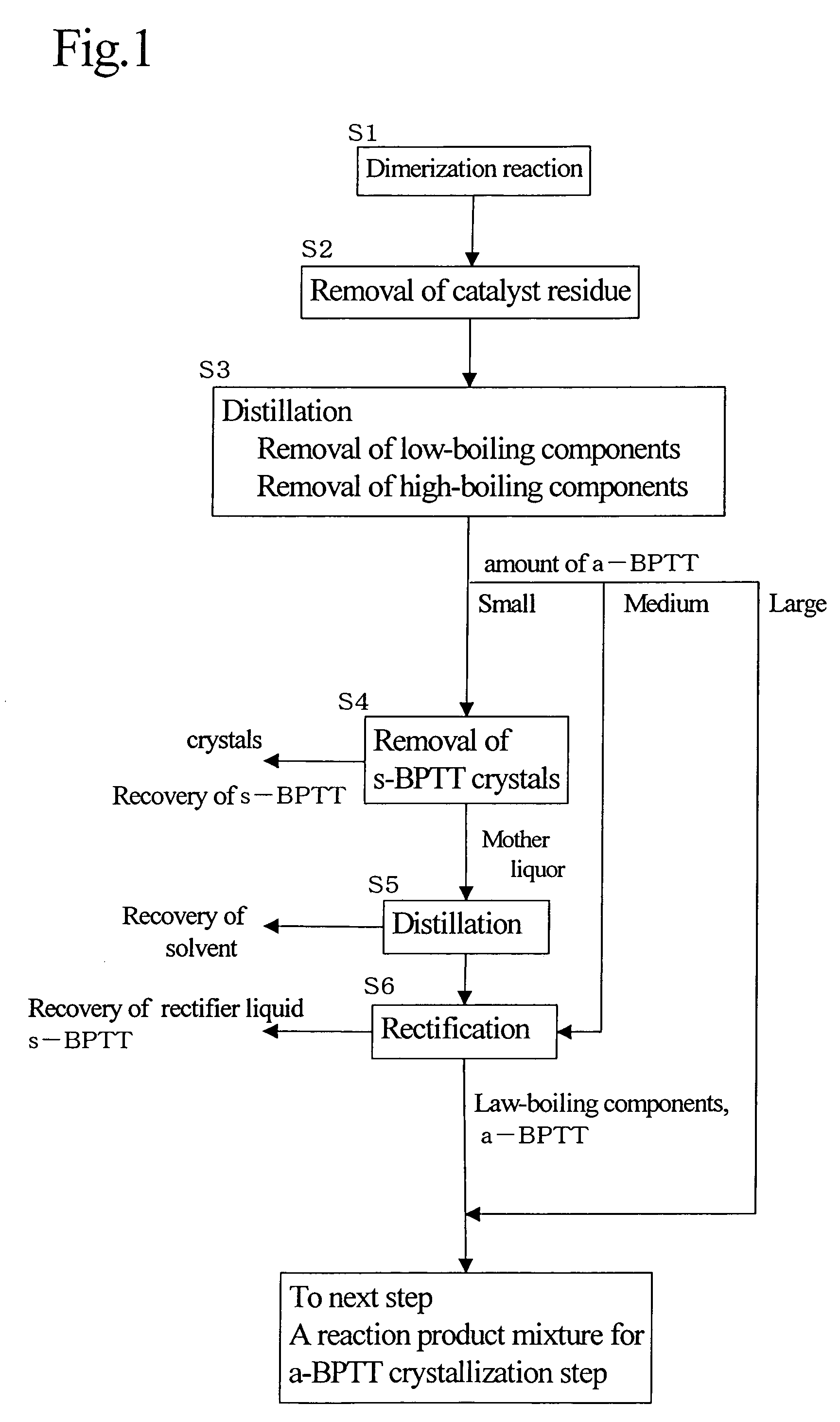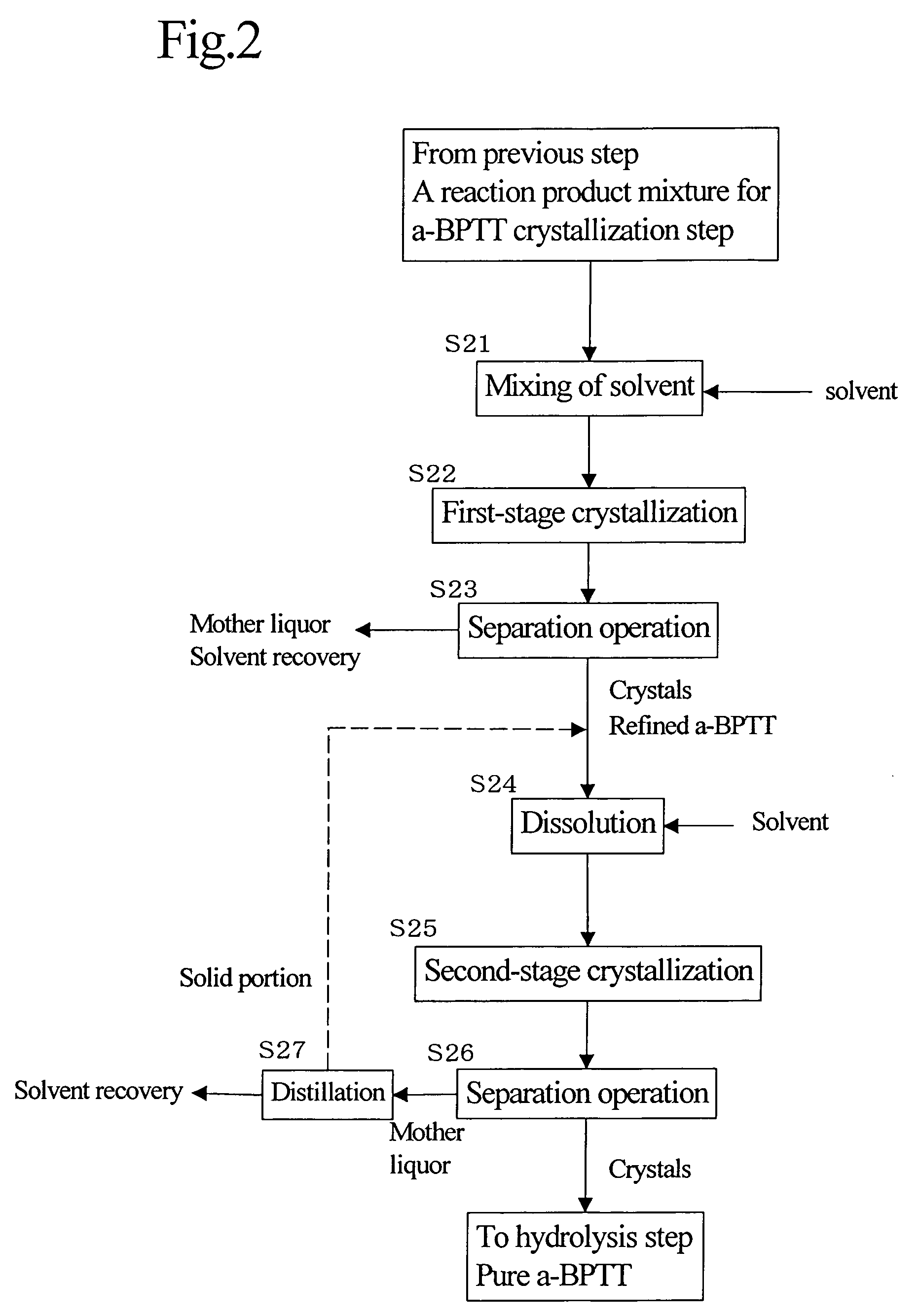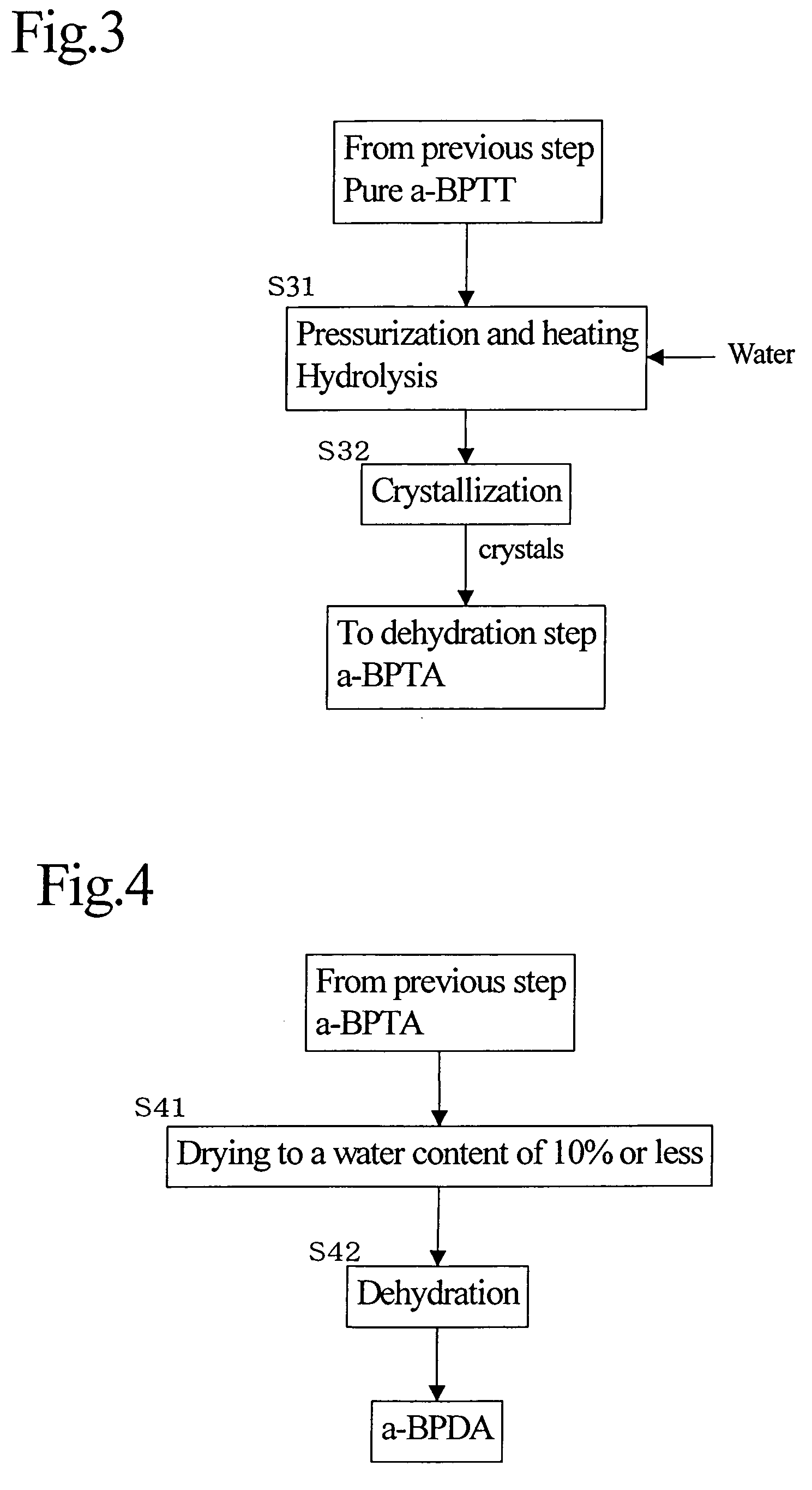Process for production of 2,3,3',4'-biphenyltetracarboxylic dianhydride
a technology of tetracarboxylic dianhydride and tetracarboxylic dianhydride, which is applied in the field of process for producing 2, 3, 3, 4 'biphenyltetracarboxylic dianhydride, can solve the problems of inferior properties of polyimide obtained by imidation of polyamic acid, low polymerization degree of polyamic acid, etc., and achieves low polymerization degree, improved purity of a-
- Summary
- Abstract
- Description
- Claims
- Application Information
AI Technical Summary
Benefits of technology
Problems solved by technology
Method used
Image
Examples
example 1
[0109]A dimerization reaction of dimethyl o-phthalate was carried out using a catalyst having a composition of palladium acetate / o-phenanthroline / copper acetate=2 / 2 / 0.5 (molar ratio). The reaction mixture was subjected to a plurality of times of distillation to remove low-boiling components and high-boiling components; s-BPTT was removed by crystallization using methanol as a crystallization solvent; the methanol was removed by distillation; rectification was conducted to obtain, as a distillate, a reaction product mixture (crude dimer, s-type / a-type=0.1 / 1) containing about 40% of a-BPTT (in this case, tetramethyl 2,3,3′,4′-biphenyltetracarboxylate).
[0110]The reaction product mixture as a distillate was at about 120° C. In a line, to 120 L / H (litter / hours) of the reaction product mixture (crude dimer) was mixed in line and 420 L / H of methanol heated to 50° C. The resulting mixture was continuously fed into a crystallization tank controlled at 25° C. where residence time was about 8 ...
example 2
[0116]Dimethyl o-phthalate was subjected to a dimerization reaction using, as a dimerization catalyst, a catalyst having a composition of palladium acetate / copper acetate=2 / 20 (molar ratio). The reaction mixture was subjected to a plurality of times of distillation to remove low-boiling components and high-boiling components. Then, rectification was carried out to obtain, as a distillate, a reaction product mixture (a crude dimer) containing about 70% of a-BPTT.
[0117]Then, under the same conditions as in Example 1, two-stage crystallization was carried out to obtain pure a-BPTT, followed by hydrolysis and dehydration to obtain a white powder of a-BPDA (overall yield: 27.5%). Incidentally, except that the yield of a-BPTT in the first-stage crystallization was 55%, other purities and the logarithmic viscosity of polyamic acid were the same as in Example 1.
example 3
[0118]A white powder of a-BPDA was obtained in the same manner as in Example 1 except that the residue after distillation of methanol from the mother liquor of the second-stage crystallization was combined with the a-BPTT after the first-stage crystallization and the mixture was used as a raw material for second-stage crystallization. As a result, the overall yield increased to 36% and the purity was 99.7%. The logarithmic viscosity (η) of a polymer (a polyamic acid) between the a-BPDA and diaminodiphenyl ether was 1.4.
PUM
| Property | Measurement | Unit |
|---|---|---|
| water content | aaaaa | aaaaa |
| temperature | aaaaa | aaaaa |
| temperature | aaaaa | aaaaa |
Abstract
Description
Claims
Application Information
 Login to View More
Login to View More - R&D
- Intellectual Property
- Life Sciences
- Materials
- Tech Scout
- Unparalleled Data Quality
- Higher Quality Content
- 60% Fewer Hallucinations
Browse by: Latest US Patents, China's latest patents, Technical Efficacy Thesaurus, Application Domain, Technology Topic, Popular Technical Reports.
© 2025 PatSnap. All rights reserved.Legal|Privacy policy|Modern Slavery Act Transparency Statement|Sitemap|About US| Contact US: help@patsnap.com



